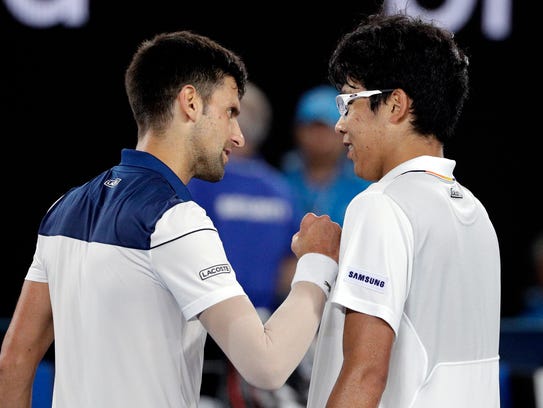Battle of the Sexes – Tennis
“No woman ever lived who could compete with a man on an equal basis – even a 55-year-old man… they can’t play a lick if they can’t beat a 55-year-old guy.” These are the infamous words of Bobby Riggs in 1973 before he went on to defeat his first women challenger Margaret Court. The better-known battle, however, was fought between Riggs and Billie Jean King that same year. The match had an estimated audience of 50 million in the USA and 90 million worldwide. It remains as one of the largest audiences to see a tennis match in the United States.
King’s physical win over her opposite sex did not convince men of her superior athleticism over Riggs. Speculations of Riggs deliberately losing the match to win a financially lucrative bet threw a dark cloud over the glory of her victory. Fortunately, for a man who once declared his desire to be the number one “chauvinist pig”, Riggs eventually acknowledged the legitimacy of his defeat as he said, “People said I was tanking, but Billie Jean beat me fair and square.”
Battle of the Sexes – MMA Take I
“99% of woman are too weak and lack the reflexes to do enough damage to stop 99% of men”, said the previously unknown Kristopher Zylinski. He was more commonly referred to as the Sexist Internet troll that eventually signed up to fight a female professional MMA fighter in early 2018.
Tara LaRosa vs. sexist internet troll, Krystopher Zylinski | This Saturday at 7pm ET | Airing LIVE on FACEBOOK https://t.co/IFDBLkMRlu pic.twitter.com/ayIpAYo4df
— Women's MMA Rankings (@WMMARankings) January 2, 2018
45 years after King defeated Riggs, many men still see women as an inferior counterpart in sport. What has changed, however, is the willingness of women to step up to defend themselves. A number of women MMA fighters put their names down to go against the Zylinski, including the terrifying 6 ft. 2 tall, 236 lbs. Brazilian Fighter Gabi Garcia. Zylinski then clarified that he would only fight someone his weight class – at 160 lbs., but he would gladly take on a pro female fighter. Eventually, Tara LaRosa, an MMA veteran of 27 pro fights stepped in as the female representative of the battle.
The fight was scheduled to be live-streamed on the 6th Jan 2018, but at the 11th hour, the State Athletic Commission shut down the fight.
Battle of the Sexes – MMA Take II
Undeterred, LaRosa and Zyllinski rescheduled the match in an unknown time and location for the match. Their fight was recorded and broadcasted on 22nd Jan 2018. In contrast to King vs. Riggs, the MMA Battle of the Sexes had a live audience of one man – the videographer.

Zylinski – a fit, muscular young man was worn down by his female opponent. He surrendered twice, first time due to exhaustion and later due to an arm bar. He claimed that LaRosa won because she was better conditioned to fight training. He considered the experience ‘eye-opening’ and did not expect for someone with his sound fitness level he would be gassed out within 4 minutes.
Any viewers who had expected Zylinski to win probably imagined a victorious knock out. Even LaRosa admitted as much, “Yeah I was nervous as hell… I thought to God … he was going to start like, swing on me and knock me out.” The reality, however, was that Zylinski had little grasp of striking distance and struggled to even get close enough to attempt a punch. “The distance was very tough,” he explains. “You expose yourself a lot”. In his second effort to defeat her, he tried to wrestle her to the ground.
Unfortunately for Zylinski, grappling was where LaRosa was most advantageous. “My game plan… was to go to the ground immediately”. Nonetheless, she still needed to utilise her years of muscle memory, manoeuvring her opponent using her body weight instead of brute force. “Even on the ground he was stronger than me,” LaRosa conceded.
Mind, Muscle, Memory
Aside from luck and other external factors, Mind, Muscle and Memory are three main aspect of an athlete that can influence the outcome of a match. Men usually focus solely on ‘Muscle’. Undoubtedly, pound for pound, men are generally stronger and thus they decide that women will always lose.
In the battles of the sexes, from King vs. Riggs to LaRosa vs. Zylinski, the women won their tournaments via a superior mind game that drew on the wisdom of their memories. King changed her aggressive style and adopted a baseline game to counter Riggs’ defensive methods. She gained insight from the loss of Margaret Court earlier that year. Eventually, King wore Riggs down after forcing him to run far more than he was accustomed to. LaRosa observed that Zylinski “was not conditioned mentally. I know the drill, to relax, to breath regularly.”
“Sorry I could not do better,” Zylinski apologised sheepishly as he collapsed onto the mat at the end of his fight. When asked if he felt humbled by this, ‘Sexist Internet Troll’ followed the lead of his ancestor ‘Number One Chauvinist Pig’ and agreed readily.
Video footage of the match can be seen:
https://www.facebook.com/McDojoLife/videos/1532446250202313/
Battle of the Sexes discusses two types of tournament between 2 men & 2 women – Tennis, Riggs & Court and MMA, LaRosa vs Zylinski.









